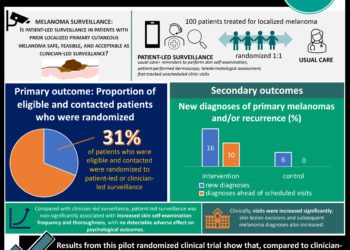Active sexting among teens related to sexual activity
1. Adolescents who engaged in active sexting (sending a sexually explicit text message) were more likely to be sexually active 1 year later compared to those who engaged in passive sexting (asking or being asked for a sext); however the former were not any more likely to engage in risky sexual behaviors.
2. Passive sexting was positively associated with active sexting 1 year later, indicating that active sexting may mediate the relationship between passive sexting and sexual intercourse.
Evidence Rating Level: 2 (Good)
Study Rundown: Sexting (sending a nude picture via text or email) among adolescents is an increasingly common activity,and has been shown to correlate with sexual behavior. Results of this study indicated that active sexting, or the act of sending a nude picture, was associated with increased odds of engaging in sexual intercourse 1 year later. Passive sexting was not associated with increased odds of sexual activity, but was associated with active sexting 1 year later. Therefore, active sexting seems to serve as a link between passive sexting and engaging in sexual intercourse. Sexually active adolescents who sexted were just as likely to participate in risky sexual behaviors, such as drug use or unprotected sex, as those who did not sext. Limitations include narrow definitions of both “sexting” and “sexual behavior.” A temporal relationship between sexting and onset of sexual intercourse yields an opportunity for timely intervention to educate teens who are more likely to engage in sexual activity about sex.
Click to read the study, published today in Pediatrics
Relevant Reading: Sexually explicit cell phone messaging associated with sexual risk among adolescents
Study Author, Dr. Jeff R. Temple, PhD, talks to 2 Minute Medicine: University of Texas Medical Branch Health, Director, Behavioral Health and Research, Associate Professor and Psychologist, Department of Ob/Gyn.
“Our results further support the notion that sexting is a viable indicator of actual sexual behavior, and begins to answer the question of what comes first. That we found that sexting is a precursor to sex in many cases will aid tween- and teen–focused health care providers in their interaction with patients and patents’ parents. Further, programs designed to promote healthy sexuality and prevent early sexual debut may benefit by targeting sexting behaviors.”
In-Depth [retrospective cohort]: This study used spring 2011 (Wave 2) and spring 2012 (Wave 3) data from a longitudinal study of 964 southeast Texas high school students, 56% of whom were female with a mean age of 16.09 years. Participants were asked if they had ever sent a nude picture of themselves via text or email (active sexting) or if they ever asked or were asked to do so (passive sexting). They were also asked about specific sexual behaviors (safe sex practices, substance use). Active sexters had 1.32 times greater odds of having had sex at Wave 3 compared to passive sexters (95% CI, 1.07 to 1.63). Passive sexters had higher odds of having sent a sext in Wave 3, regardless of whether they asked or were asked for a sext (OR= 5.35, bias corrected CI 3.39 to 8.44 and OR= 4.55, 95% CI 3.37 to 6.15, respectively). Passive sexting was not significantly associated with subsequent sexual activity, indicating a sequential relationship between passive sexting, active sexting, and sexual intercourse. Finally, active sexting was not associated with risky sexual behaviors, such as unprotected sex (OR= 1.01, 95% CI 0.83 to 1.22) or substance use before sex (b= 0.10, 95% CI -0.02 to 0.22).
More from this author: AAP policy update recommends first-line contraceptives, addresses specific populations, Buprenorphine most responsible for pediatric hospitalizations due to unsupervised ingestion, AAP continues to recommend fluoride for prevention of dental caries, Clinical efficacy of quadrivalent HPV vaccine persists after 8 years, Virtual visits linked to decreased stress in hospitalized children
Image: PD
©2012-2014 2minutemedicine.com. All rights reserved. No works may be reproduced without expressed written consent from 2minutemedicine.com. Disclaimer: We present factual information directly from peer reviewed medical journals. No post should be construed as medical advice and is not intended as such by the authors, editors, staff or by 2minutemedicine.com. PLEASE SEE A HEALTHCARE PROVIDER IN YOUR AREA IF YOU SEEK MEDICAL ADVICE OF ANY SORT.







